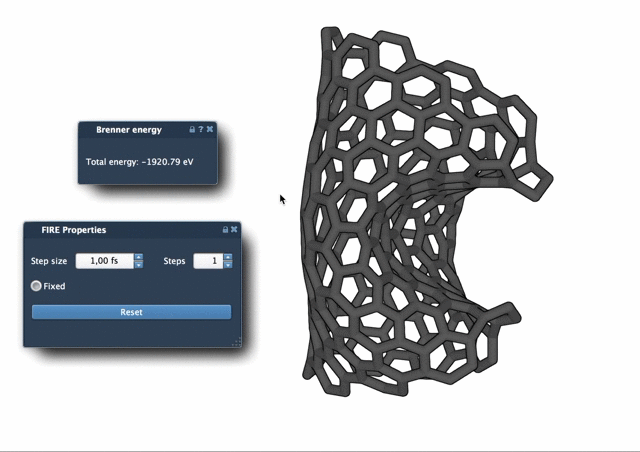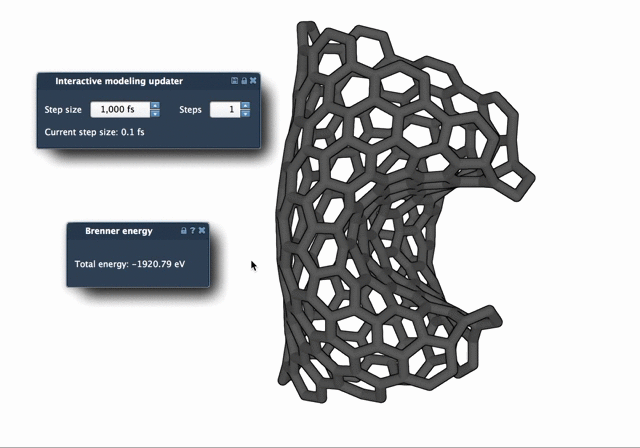When building or analyzing molecular structures, geometry optimization is essential to remove unrealistic geometries and prepare systems for simulations. However, classic approaches such as steepest descent can be time-consuming, especially when your structure requires large-scale structural relaxation. Fortunately, SAMSON offers a faster alternative: the FIRE Minimizer (Fast Inertial Relaxation Engine).
This post introduces the FIRE Minimizer available in SAMSON and explains why it may be a better fit when preparing molecular systems, especially those with significant collective motions.
Why Optimize with FIRE?
Geometry optimization aims to bring a molecular structure to a local minimum on its potential energy surface. The challenge is doing this efficiently, especially when simulating larger molecules or interacting systems. The FIRE algorithm is suited for these situations, as it often converges faster than standard techniques like steepest descent.
Here’s why FIRE might be worth a closer look:
- Speed: FIRE generally achieves convergence faster than steepest descent, particularly when geometry is changing significantly but energy gradients remain small.
- Integration: It works with any interaction model in SAMSON, making it versatile across different simulation goals.
- Simplicity: It can be added as a State Updater in your simulation workflow quickly – no scripting needed.
Visual Comparison: FIRE vs. Steepest Descent
A clear way to see the efficiency difference is to observe what happens in practice. FIRE often gets to a relaxed structure in fewer steps, even when large parts of the molecule are in motion.
Below is a side-by-side animation comparing geometry relaxation using FIRE (left) versus steepest descent (right):


Notice how the FIRE algorithm succeeds in resolving the structure more quickly, completing the required transformations in fewer updates.
Using FIRE in Your Workflow
To optimize a molecule using FIRE in SAMSON:
- Load your molecular structure (formats like PDB or MOL2 are supported).
- Go to Edit > Add Simulator.
- Choose an interaction model appropriate to your system.
- In the State Updaters list, select FIRE.
FIRE Settings Explained
Once added, you can fine-tune the FIRE optimizer through the following options:
| Setting | Description |
|---|---|
| Step size | Initial integration step for minimization. |
| Steps | Number of FIRE steps between viewport updates – helpful for controlling visualization speed. |
| Fixed | If checked, keeps the step size constant instead of adapting it dynamically. |
These settings provide control over the balance between speed and visual feedback. For instance, increasing the Steps value results in less frequent, but more visually distinct, updates if you’re monitoring progress visually.
When to Use FIRE?
The FIRE Minimizer is especially effective in the early stages of preparing a simulation, when you need to:
- Relieve steric clashes or irregular bonds after molecule import
- Optimize structures derived from experimental data
- Prepare large biomolecular assemblies prior to detailed dynamics
Whether you’re optimizing NMR-derived structures or cleaning up protein-ligand complexes, FIRE can be easily integrated into your SAMSON workflow.
Learn more in the original documentation.
SAMSON and all SAMSON Extensions are free for non-commercial use. You can get SAMSON at https://www.samson-connect.net.





